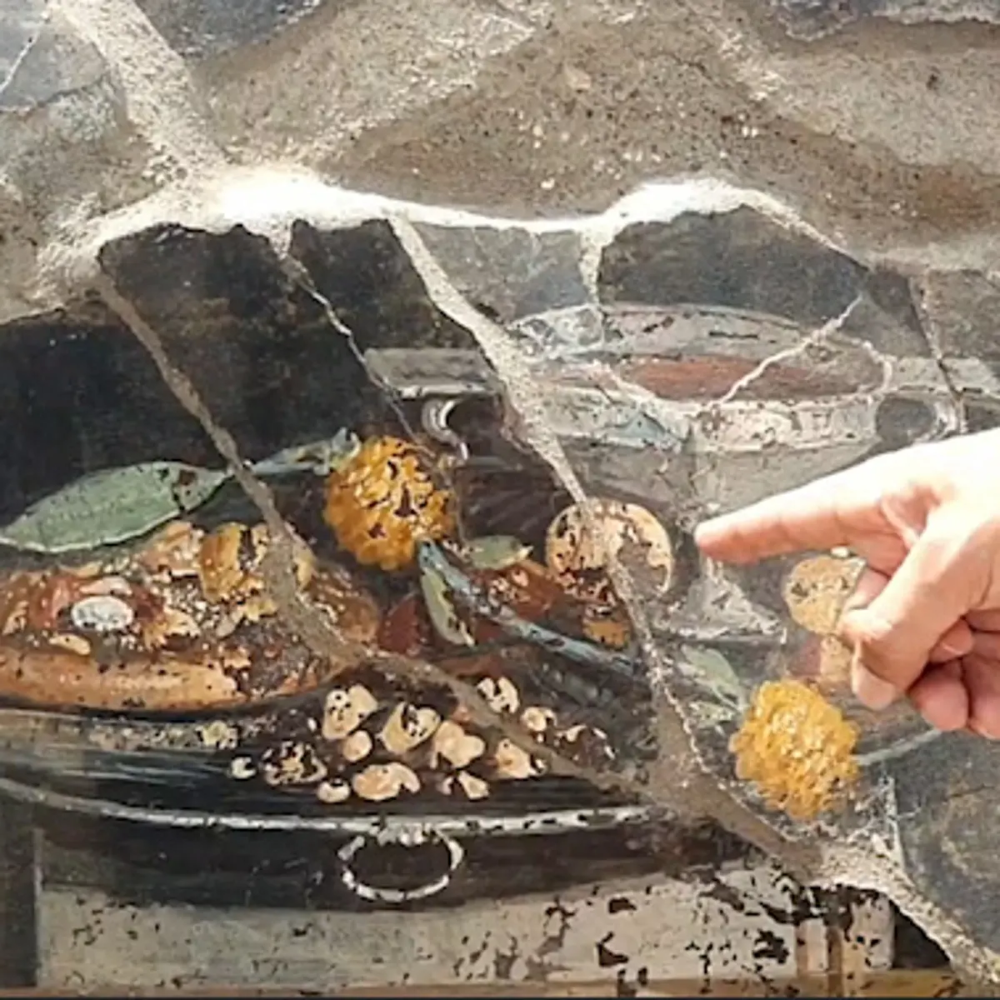
Pompeii, the city that got buried under a mountain of volcanic ash when Mount Vesuvius erupted in 79 CE, still manages to surprise us even after 2,000 years. This time, archaeologists discovered a painting that resembles a pizza, although it’s not exactly the same as the ones we love today.
A Culinary Journey Through Time

Located in the Regio IX district, the painting was discovered in the hallway of a house situated near a bakery — an interesting location nonetheless. The area was partially excavated in the 19th century, but more extensive work carried out recently revealed the wall painting. The artwork depicts a flatbread topped with a sauce, possibly enjoyed with an assortment of fruits or spices.
Pizza’s Missing Ingredients

Did this ancient pizza include tomatoes and cheese? Sadly no! Tomatoes didn’t arrive in Europe until around 1,500 years after Pompeii met its fiery fate. As for the beloved mozzarella cheese, it hadn’t even been invented during that time. So, this ancient pizza was far from the cheesy, tomato-packed delight we’re accustomed to.
A Slice of Pizza Culture

We can’t overlook the cultural significance of pizza in Italy. It’s estimated that one-third of the food budget of tourists visiting Italy goes straight into indulging in this culinary icon. The connection between this ancient painting and pizza, even with its differences, reminds us of pizza’s humble beginnings in southern Italy. Starting as a simple and inexpensive meal, pizza has conquered the world and can now be found even in fancy restaurants.
Bridging Past & Present
Although this ancient painting isn’t an exact replica of our beloved pizzas today, it gives us a remarkable glimpse into the past. It shows us that people from centuries ago weren’t all that different from us when it came to food. The painting represents a simple and satisfying meal, along with the touch of luxury that silver trays bring.